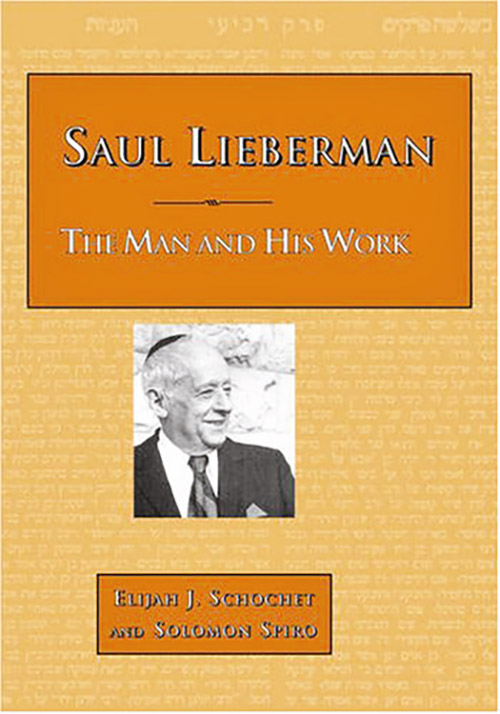
Reviewing: “Saul Lieberman: The Man and His Work” by by Elijah J. Schochet and Solomon Spiro. JTS Press. 2005. English. Paperback.
332 pages. ISBN-13: 978-0873341110.
Last month, the new cycle of the Daf Yomi Yerushalmi, the daily study of a page of the Talmud Yerushalmi, began. The Jerusalem Talmud was compiled in Israel about 200 years before its more famous cousin, the Talmud Bavli.
The practice of Daf Yomi Yerushalmi was started in 1980 at the behest of the then Gerer Rebbe, Rabbi Simcha Bunim Alter. It follows the same daily time frame as Daf Yomi Bavli. But due to the Yerushalmi being shorter, the 11th cycle began last month.
Part of the problem in learning Talmud Yerushalmi was the dearth of commentaries on it. The only reason we can learn Talmud Bavli is, in part, due to Rashi’s commentary; Prof. Haym Soloveitchik astutely noted that Rashi’s commentary on the Talmud democratized Talmudic scholarship. Without Rashi, the Talmud was a closed book for most Jews.
And, as the Daf Yomi Yerushalmi cycle starts, a tragedy is that one of the most critical commentaries on it won’t be used by the masses. That being the HaYerushalmi kiFeshuto by the late Rabbi Saul Lieberman. In fact, many people do not even know of its existence.
While the incredible biography, “Saul Lieberman: The Man and His Work,” by Rabbi Elijah Schochet and Solomon Spiro, was published in 2005, I was only made aware of it recently by my friend and fellow Jewish Link writer Mitch Morrison.
Lieberman’s life (1898-1983) saw him live during some of the most tumultuous times in recent Jewish history. He was a star student among many other luminaries at the Slobodka yeshiva, and later went to study and teach in Israel.
How great of a scholar was Lieberman? Schochet and Spiro write that Lieberman once wrote to his cousin, the Chazon Ish, inquiring about a source. To which the Chazon Ish replied that he wondered why Lieberman would write to him. As if Lieberman didn’t know, no one would. That was his greatness.
In 1940, he was invited by Rabbi Louis Ginzberg to come to New York and teach at the Jewish Theological Seminary of America (JTS). While some today might question why the Orthodox Lieberman would teach in the seminary of Conservative Judaism. Marc Shapiro writes, in “Saul Lieberman and the Orthodox,” that at the time, the differences between Orthodox and Conservative were not so easy to delineate, and were in fact quite similar.
Schochet and Spiro suggest that two of the reasons Lieberman selected JTS was due to the significant salary he was offered. At the time, he and his wife found themselves in financial straits. In addition, his academic and teaching workload at JTS would be minimal, such that he could spend his entire day learning.
He was so absorbed in his learning that while his wife Judith Berlin Lieberman was the principal of the Shulamith School for Girls in Brooklyn from 1941 until 1976, Lieberman said at her funeral that in all the 35 years she was principal, he never once visited the school as she knew it would take him away from the study of Torah.
As engaging as the book is, the tragedy is not only has Lieberman’s magnum opus HaYerushalmi kiFeshuto not been given its due, his influence on American Jewry, which could have been significant, has been minimal. This is because unlike Rabbi Joseph Soloveitchik, whose myriad students significantly influenced and continue to influence American life, Lieberman’s students have been far fewer and less influential.
As close students of Lieberman, Schochet and Spiro have written about as good a biography as possible about a man who shared almost nothing about himself. Contrast that with Rabbi Soloveitchik, who shared countless stories of his growing up in Choslovitch and numerous other anecdotes about his family.
Did Lieberman make a tactical error in going to JTS? Or did his going there give the Conservative movement another generation before going off the deep end? Lieberman, at JTS, perhaps gave American Jewry, to a degree operating on fumes, the ability to drive a bit longer until its fuel tank could be refilled and it could sustain itself. But we will never know.
Ben Rothke lives in New Jersey and works in the information security field. He reviews books on religion, technology and science. @benrothke










